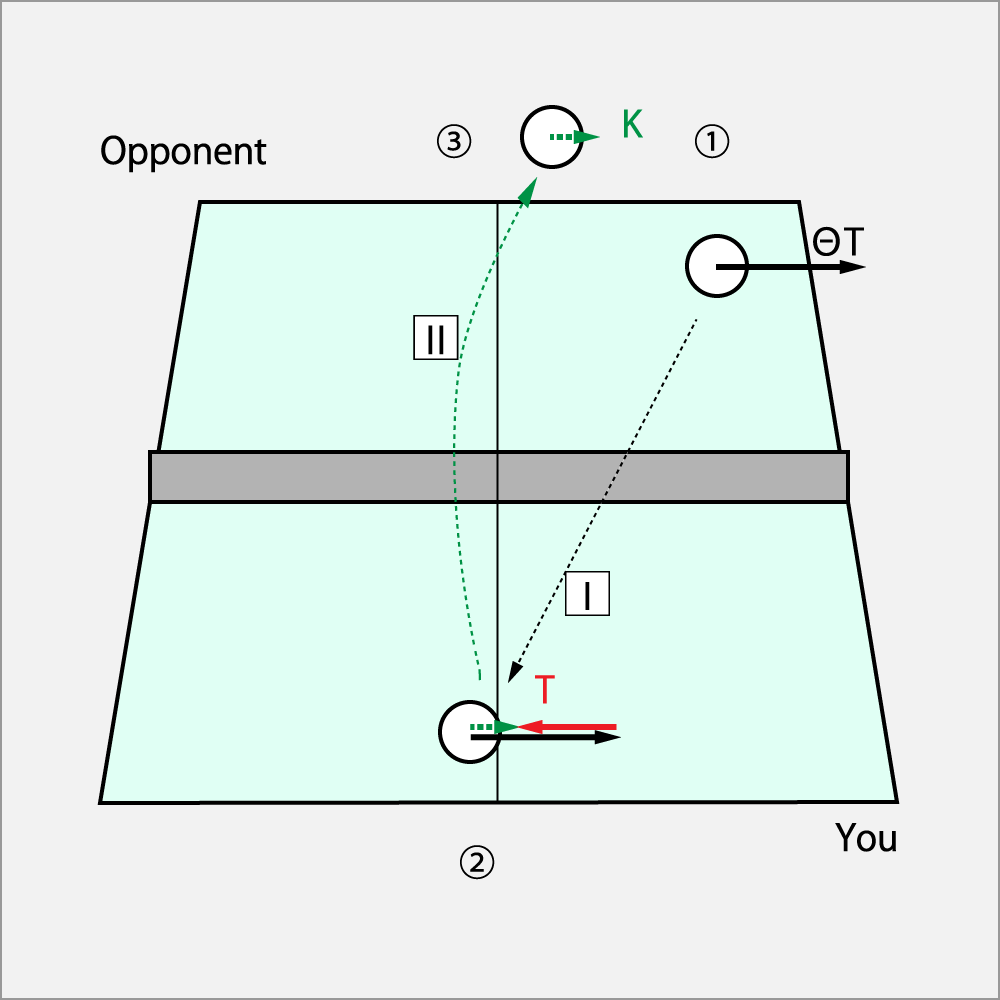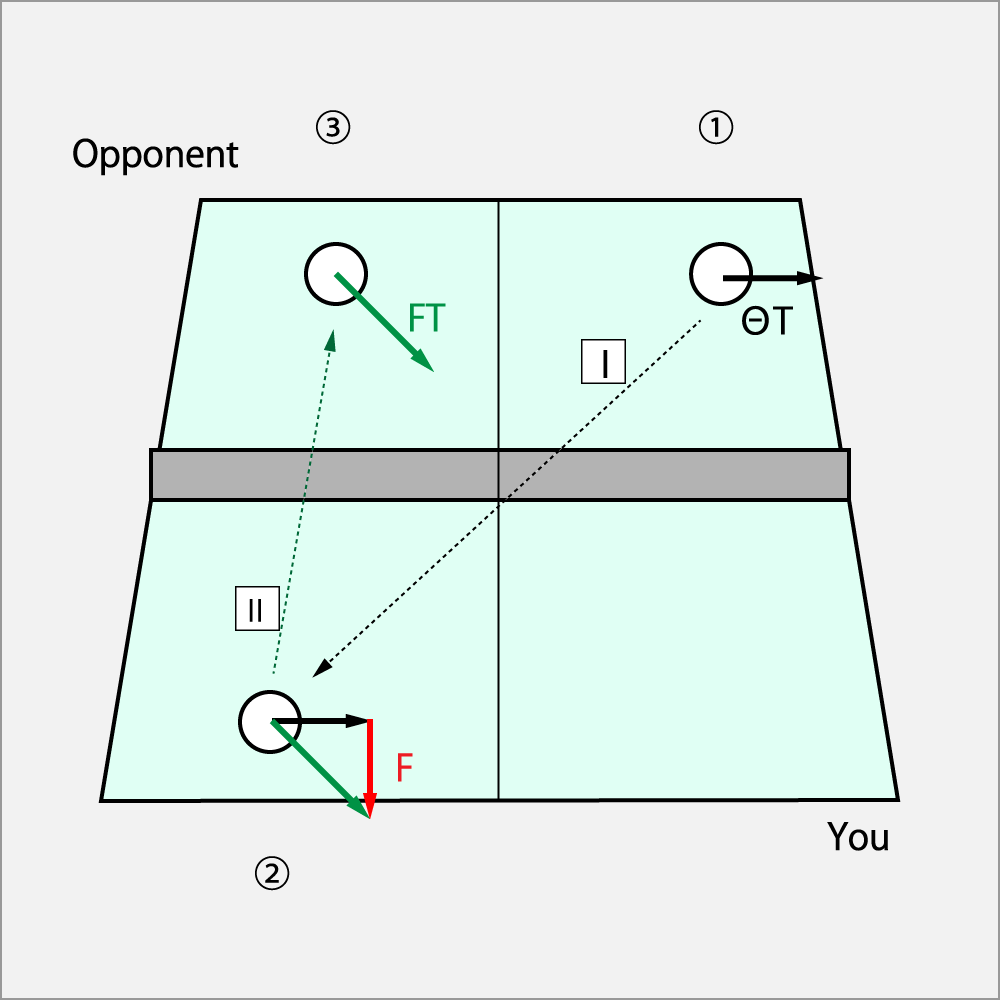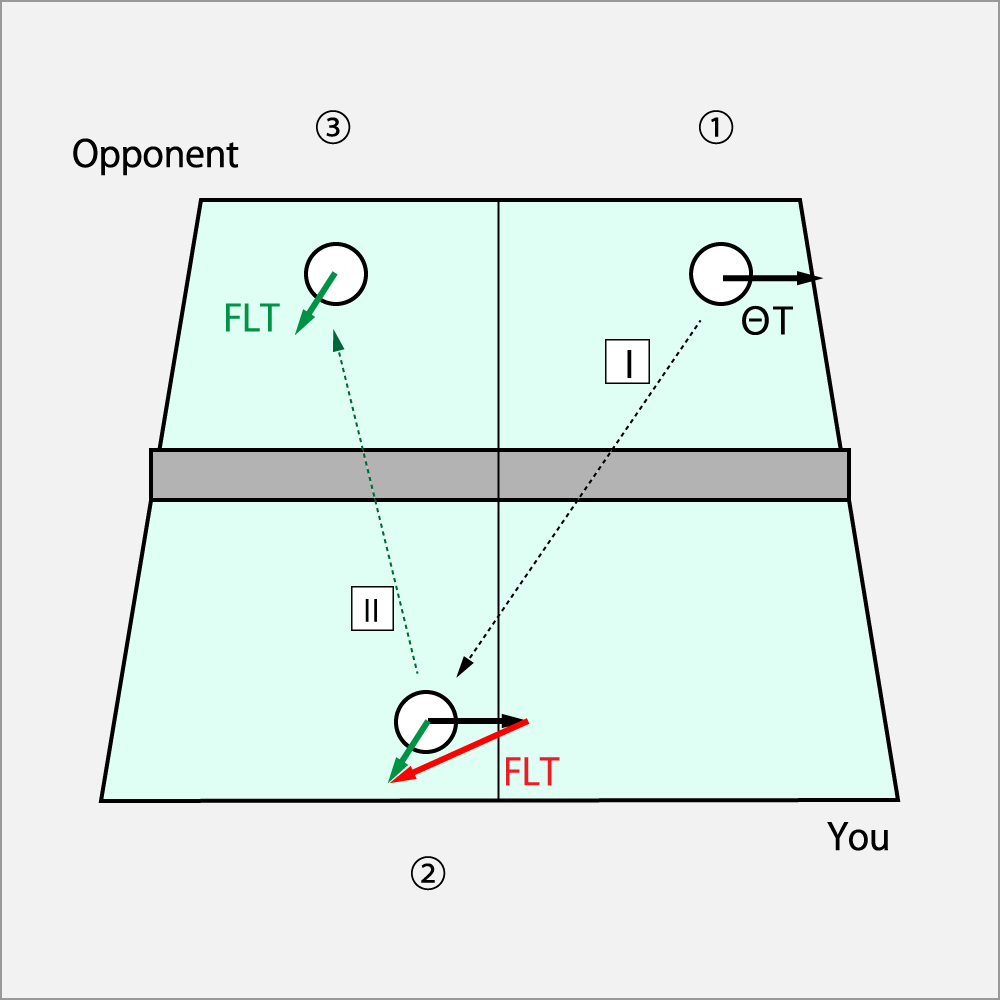Part 5. Tactics against Various Rubberers
5.4. Tactics against Inverted-sticky Rubbers
In this page, at the first, explains the rational tactics which is determined from the rubber properties of the Inverted-sticky of which the opponent's racket is wearing. After that this page describes your reasonable strategy, which is determined from the spin kinds that the opponent rubber fed out. The rubber you are using is assumed the Inverted.
The strategy described here, it will indicate you a new world.
You may not always be able to beat them by using the strategy described here,
but you will be eliminated losing games from the reason you don't know the properties of the rubber.
At least, you will gain an advantage at the level of knowledge.
5.4.1. Opponent's Tactics
Rubbing by the Inverted-sticky rubbers, its ball trajectory become shortened since its spinning speed is higher than Inverted rubbers. If the opponent thinks to pull out enough the characteristics of this rubber, they will take the position of vanguard to aim the courses where you will feel difficult of treating the ball.
Opponent's tactics will mostly use a offensive spin which contains fast spin into the Cut or Drive, and will be also effective taking the juggling using spin reaction force by the counter block.

This rubber has a large friction. If the opponent served with fast spin of Drive, and you responded with no intention, the spin converts to flight, and the ball will jump out from the table.
5.4.2. Your Strategy
As a common offensive tactics against the Inverted, you will give a service with the same direction of spin which the opponent would intend. This aims to let less the spin conduction between the rucket and ball, and let the ball flies over the court. this tactic details are described in Part 2, "Basic Tactics by Spin Composition".
When you give a service with few spin, the repulsive force of this rubber becomes small, so that Knuckle is more effective the ball blocked by this rubber's is often caught in the net, and appling Drive by this rubber's often flies over the court.
(A) Response to drive service from opponent (1)

In the attack, since the Drive which the spin from the opponent is faster, you need to avoid to the ball fling too over.
To tilt the spin axis to the lateral by giving a Hcork (H) and Fcork (F), you hold the racket horizontally, and rub the apex of ball.
it is more better if you could aim the course of corner.
(A) Response to drive service from opponent (2)

The figure below adds a three dimensional spin to the ball. It is difficult to draw the spin of three-dimensional on a two-dimensional figure, so it is difficult to image the spin from that figure. I want you to understand the spin in the English initials.
By the block, since the Drive which the spin from the opponent is faster, you need to avoid to fly the ball to the front.
To tilt the spin axis to the lateral by giving a Hcork⋅Curve⋅Drive (HRT) and Fcork⋅Shoot⋅Drive (FLT), you hold the racket vertically, and rub the side of the ball.
it is more better if you could aim the course of corner.